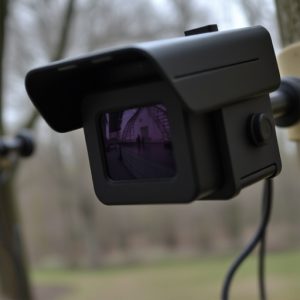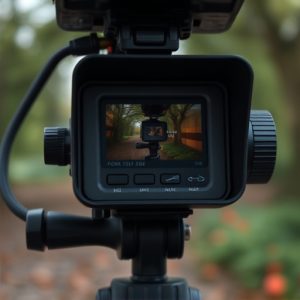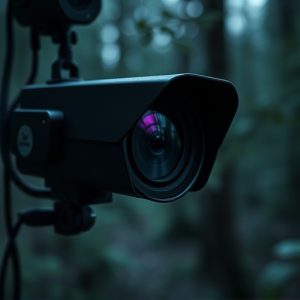Detecting Small Hidden Cameras: Safety Tips & Signal Blocking Measures
Detecting small hidden cameras in nurseries requires understanding electromagnetic signals and their…….
Detecting small hidden cameras in nurseries requires understanding electromagnetic signals and their unique signatures, which can be identified using specialized tools like EMF detectors. By scanning frequency bands and checking physical anomalies, these devices can uncover covert surveillance. To ensure safety, implement signal-blocking measures such as metal screens, shielding paint, or films on windows and walls, along with encrypted communication channels. A meticulous visual inspection followed by electromagnetic signal detection enhances privacy and security for infants and families in vulnerable settings.
In today’s digital age, awareness of surveillance device electromagnetic signal detection is paramount, especially in personal spaces like the nursery. This article equips you with essential knowledge and practical tips on uncovering small hidden cameras. We begin by demystifying electromagnetic signals, providing a foundation for their detection. Next, we explore advanced techniques and tools to identify these devices. Furthermore, we discuss implementing signal-blocking measures for a safer environment. Finally, specific advice is offered for locating and addressing small hidden cameras in nursery settings.
- Understanding Electromagnetic Signals: A Foundation for Detection
- Identifying Hidden Camera Signals: Techniques and Tools
- Nurturing a Safe Environment: Implementing Signal-Blocking Measures
- Uncovering Small Hidden Cameras in the Nursery: Practical Tips and Precautions
Understanding Electromagnetic Signals: A Foundation for Detection
Electromagnetic signals are an integral part of our modern world, and understanding them is key to detecting hidden surveillance devices like small hidden cameras for nursery settings. These signals are electromagnetic waves that carry information, and various technologies emit them—from Wi-Fi routers to mobile phones and security cameras. When it comes to detection, it’s about identifying unusual patterns or specific frequencies that might indicate the presence of unauthorized tracking devices.
By familiarizing yourself with common electromagnetic signatures, you can spot anomalies. For instance, small hidden cameras often transmit at specific bands or use unique signal characteristics. Learning about these nuances allows for more effective searching and ensures your privacy is protected in places like a nursery where such devices can be particularly concerning.
Identifying Hidden Camera Signals: Techniques and Tools
Identifying hidden camera signals is a critical skill, especially when dealing with small hidden cameras designed for discrete surveillance, such as those that might be in a nursery. These miniature devices can emit faint electromagnetic signals, often invisible to the naked eye, which dedicated tools and techniques can help detect. One effective method involves using EMF (Electromagnetic Field) detectors, capable of picking up on unusual fluctuations in electromagnetic radiation, potentially indicating the presence of hidden cameras.
Specialized software and apps designed for signal analysis are also valuable assets. These tools allow users to scan frequency bands known to be used by hidden cameras, identifying any suspicious signals that might point to their location. Additionally, checking for physical signs like unusual wiring or small devices attached to walls or furniture can provide crucial clues. By combining these techniques, individuals can enhance their chances of locating and disabling even the smallest hidden cameras in sensitive areas like nurseries, ensuring privacy and safety.
Nurturing a Safe Environment: Implementing Signal-Blocking Measures
Creating a safe and secure environment in a nursery or any sensitive space is paramount, especially with the proliferation of small hidden cameras. One effective way to protect privacy and prevent unauthorized surveillance is by implementing signal-blocking measures. This involves using materials and technologies designed to disrupt electromagnetic signals, rendering hidden cameras useless.
For instance, installing metal screens, shielding paint, or specialized signal-blocking films on windows and walls can significantly hinder the transmission of signals from small hidden cameras. These physical barriers create a layer of protection, ensuring that even sophisticated surveillance devices cannot penetrate and transmit data. Additionally, using encrypted communication channels and privacy-focused technology further fortifies the space against unwanted observation.
Uncovering Small Hidden Cameras in the Nursery: Practical Tips and Precautions
Uncovering small hidden cameras in the nursery requires a meticulous and cautious approach, especially as these devices can pose significant privacy risks to infants and their families. The first step is to conduct a visual inspection, checking every nook and cranny for any unusual objects or devices. Look for anything that seems out of place, like small holes where wires might exit, or tiny cameras disguised as everyday items such as toys or books.
Using electromagnetic signal detection tools can be an effective method for finding hidden cameras. These devices can pick up on the electromagnetic radiation emitted by surveillance equipment. By scanning your nursery with a reliable detector, you may be able to pinpoint the location of any covert cameras, ensuring your child’s safety and privacy in their most vulnerable environment.
In light of the ever-present concern over small hidden cameras in nursery settings, this article has equipped readers with a comprehensive toolkit for detection and prevention. From understanding electromagnetic signals to implementing signal-blocking measures, each section offers valuable insights into navigating this modern-day enigma. By combining theoretical knowledge with practical tips, parents and caregivers can now actively foster a safer environment for children, ensuring peace of mind in the digital age.


